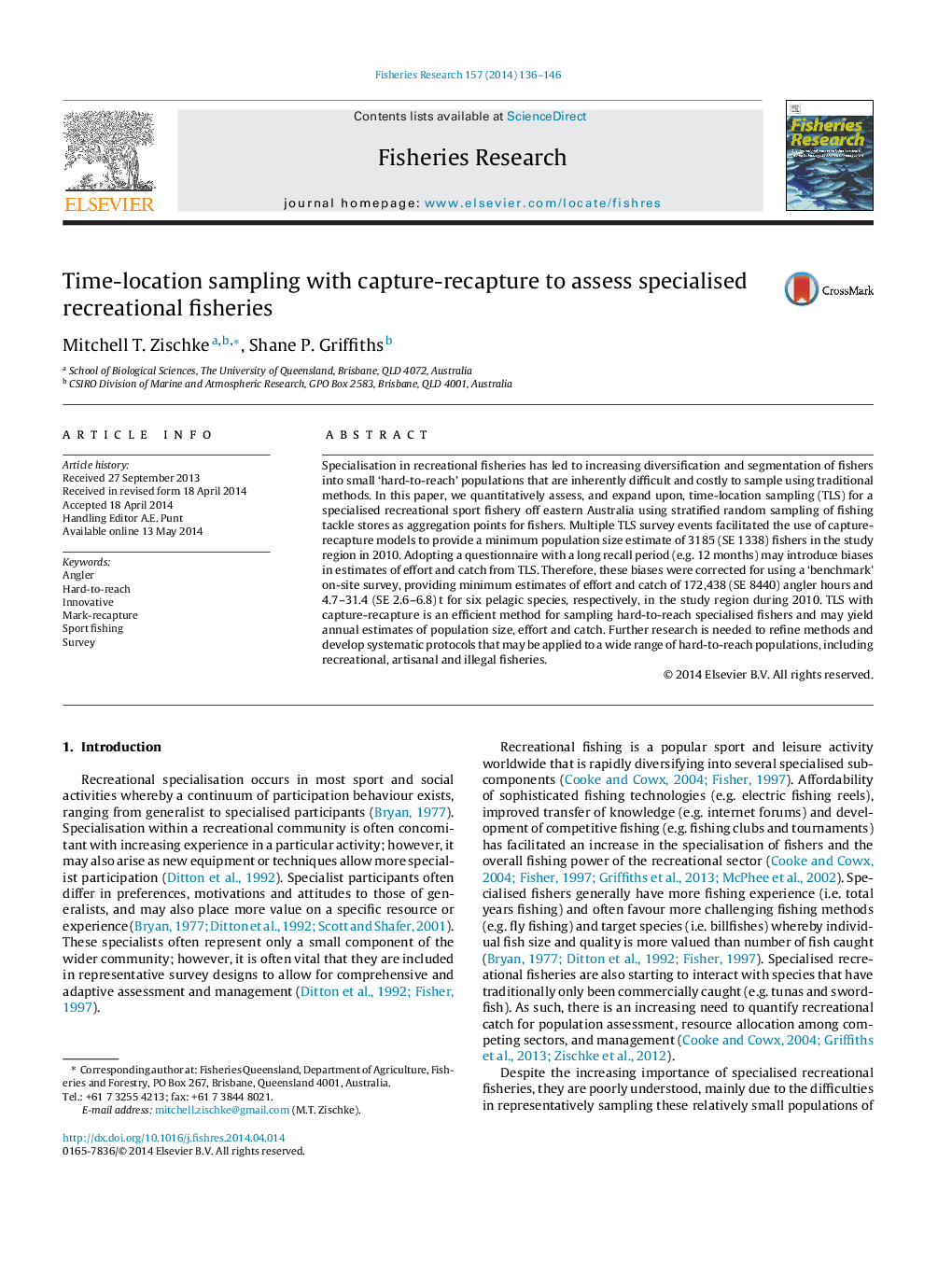| Article ID | Journal | Published Year | Pages | File Type |
|---|---|---|---|---|
| 4543049 | Fisheries Research | 2014 | 11 Pages |
Specialisation in recreational fisheries has led to increasing diversification and segmentation of fishers into small ‘hard-to-reach’ populations that are inherently difficult and costly to sample using traditional methods. In this paper, we quantitatively assess, and expand upon, time-location sampling (TLS) for a specialised recreational sport fishery off eastern Australia using stratified random sampling of fishing tackle stores as aggregation points for fishers. Multiple TLS survey events facilitated the use of capture-recapture models to provide a minimum population size estimate of 3185 (SE 1338) fishers in the study region in 2010. Adopting a questionnaire with a long recall period (e.g. 12 months) may introduce biases in estimates of effort and catch from TLS. Therefore, these biases were corrected for using a ‘benchmark’ on-site survey, providing minimum estimates of effort and catch of 172,438 (SE 8440) angler hours and 4.7–31.4 (SE 2.6–6.8) t for six pelagic species, respectively, in the study region during 2010. TLS with capture-recapture is an efficient method for sampling hard-to-reach specialised fishers and may yield annual estimates of population size, effort and catch. Further research is needed to refine methods and develop systematic protocols that may be applied to a wide range of hard-to-reach populations, including recreational, artisanal and illegal fisheries.
